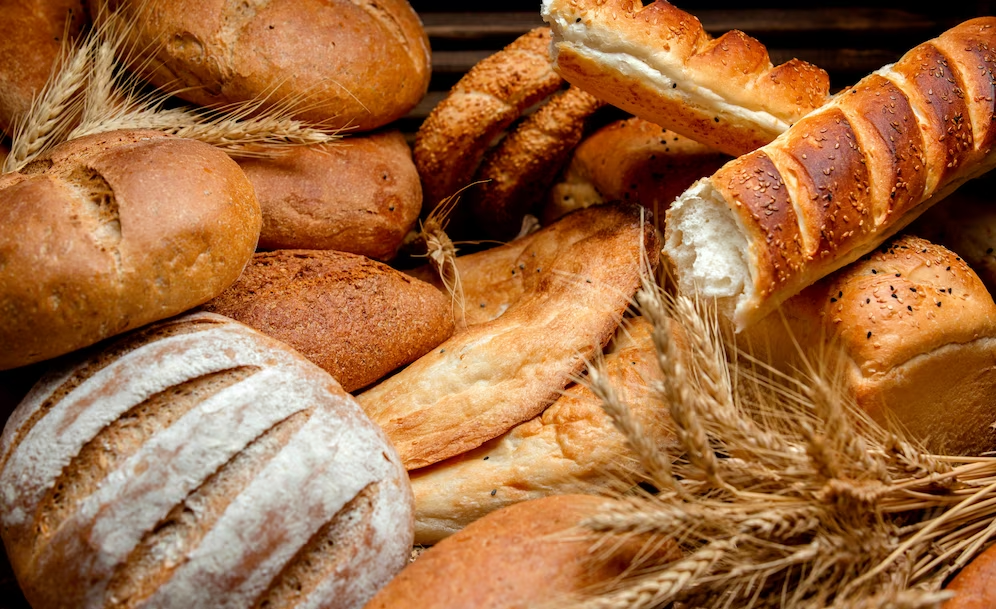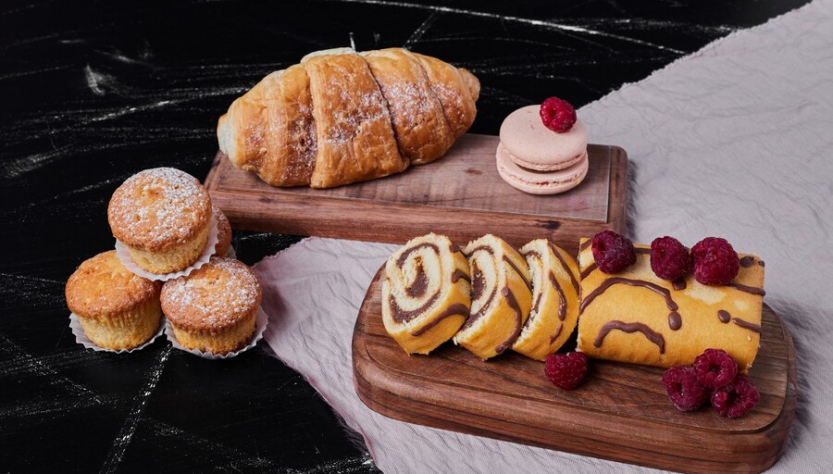When it comes to the world of baked goods, the distinction between cake and bread may seem obvious at first glance. After all, cake is often associated with sweetness, celebration, and layers adorned with frosting, while bread is a staple in many diets, ranging from simple sandwiches to artisan loaves. But is this differentiation as clear-cut as it appears? In this exploration, we delve into the nuanced characteristics of cake and bread, dissecting their ingredients, preparation methods, and cultural roles. So, is cake really just a type of bread, or are they distinct delicacies with their own unique identities?
A Culinary Comparison: Cake vs. Bread
Before delving into the depths of this discussion, let’s establish a fundamental understanding of cake and bread by comparing their key characteristics in terms of ingredients, texture, flavor, and purpose. Below is a brief comparison table:
| Characteristic | Cake | Bread |
|---|---|---|
| Ingredients | Flour, sugar, eggs, butter/oil | Flour, water, yeast, salt |
| Texture | Tender, soft, crumbly | Chewy, firm, spongy |
| Flavor | Sweet, often enhanced with flavors | Neutral, slightly savory |
| Purpose | Celebration, dessert | Sustenance, accompaniment to meals |
As evident from the table, cakes and breads have distinguishable attributes that set them apart. However, to truly determine whether cake can be considered a type of bread, we need to dig deeper into the realms of culinary science, historical evolution, and cultural significance.
The Science Behind Cake and Bread
Imagine a cake, its velvety crumb and tender bite enchanting your senses. This artful creation owes its essence to a dance of ingredients and methods. Picture a table elegantly adorned with a tablecloth. Now, let’s lay out the science in a table of our own:
The Cake: A Dance of Creaming and Leavening
| Elements | Mixing Method | Leavening Agent | Texture and Rise |
|---|---|---|---|
| Sugar and Fat | Creaming Method | Baking Powder/Soda | Light and Airy |
| Eggs |
In the spotlight of the creaming method, sugar and fat perform a graceful duet. As they blend together, air is trapped, creating a delicate and airy texture that’s synonymous with cakes. The addition of eggs lends a helping hand, enhancing the cake’s tenderness.
And what about the magic rise? Baking powder or baking soda takes the stage as the leavening agent, releasing carbon dioxide when exposed to heat. This gas inflates the cake’s structure, yielding a soft and sumptuous rise.
The Bread: A Symphony of Yeast Fermentation and Gluten
As we shift our gaze to the world of bread, a symphony of yeast fermentation and gluten development comes to life. Imagine a rustic bakery, where the aroma of freshly baked bread permeates the air. Let’s unveil the science on another table:
| Elements | Mixing Method | Leavening Agent | Texture and Rise |
|---|---|---|---|
| Flour, Water, Yeast | Kneading Method | Yeast Fermentation | Chewy and Elastic |
Here, flour, water, and yeast blend harmoniously through the kneading method. As these ingredients mingle, the yeast goes to work, devouring the sugars in the dough and exuding carbon dioxide. This gas, trapped by the dough’s structure, orchestrates a grand rise, resulting in the characteristic porous texture of bread.
Yet, the soul of bread lies in its gluten network. Through kneading, the gluten strands align, forming a web-like structure that gives bread its chewiness and elasticity. It’s this very structure that allows bread to rise and hold its shape during baking.
A Historical Perspective: Origins and Evolution

Bread: The Ancient Nourishment
As we step into the annals of history, we find that bread has stood as a steadfast companion to humanity for millennia. Ancient civilizations, from Egypt to Mesopotamia, reveled in the comfort of bread. The profound significance of this humble staple resonates through time, binding cultures and generations in a shared appreciation.
In a table of history, let’s unfold the evolution of bread:
| Era and Milestone | Noteworthy Features |
|---|---|
| Ancient Civilizations | Bread as a dietary cornerstone |
| Discovery of Wild Yeast | Leavening of bread with wild yeast |
| Evolution of Leavened Bread | Lighter and airier bread textures |
The turning point in bread’s evolution arrived with the discovery of wild yeast. This serendipitous revelation ushered in a new era of leavened bread, infusing dough with carbon dioxide produced by yeast’s natural fermentation process. The result was a transformative shift in texture, introducing an airy and porous quality that enriched the culinary landscape.
Cakes: A Sweet Journey through Time
Delve further into the chronicles of culinary history, and we encounter cakes, whose evolution paints a more intricate canvas. Ancient cakes were a reflection of simpler times, akin to sweetened breads that combined nature’s sweetness – honey, fruits, and nuts. The tapestry of cake history unfurls elegantly:
| Era and Milestone | Noteworthy Features |
|---|---|
| Ancient Cakes | Sweetened bread-like confections |
| Medieval Europe | Emergence of layered cakes and icing |
| 18th and 19th Centuries | Baking powder and soda revolutionize cakes |
Medieval Europe witnessed the inception of the notion of layering cakes, adorning them with intricate icing. This artistic elevation of cakes became a symbol of opulence and celebrations, showcasing the ingenuity of bakers. Yet, it wasn’t until the 18th and 19th centuries that the true revolution occurred. The introduction of baking powder and soda unlocked the potential for airy, delicate cakes that now grace our tables.
Cultural Significance and Culinary Roles

Cake: Sculpting Joyful Celebrations
Picture a grand hall adorned with laughter and light, where cake stands as the centerpiece of jubilation. The cultural resonance of cakes transcends mere confectionery; it’s a symphony of celebration, an artful creation that marks life’s sweetest moments. Let’s explore this dimension with the grace of a well-crafted table:
| Cultural Context | Role and Symbolism |
|---|---|
| Celebrations and Festivals | Ornate designs and sweet flavors embody joy |
| Shared Moments | Acts as a focal point for shared memories |
| Weddings, Birthdays, Graduations | Symbolizes milestones and triumphs |
In the mosaic of cultural practices, cakes emerge as beacons of festivity. They become vessels of sentiment, their ornate designs and delightful flavors encapsulating the very essence of joy. The shared act of cutting a cake not only inaugurates a moment but immortalizes it in collective memory. Cakes sculpted for weddings, birthdays, and graduations symbolize accomplishments and new beginnings.
Bread: The Silent Unifier
Shift your gaze to a different tapestry, one where bread stands as a silent unifier, transcending cultures and borders. Bread, the staff of life, journeys beyond celebrations to weave itself into the fabric of daily existence:
| Cultural Context | Role and Symbolism |
|---|---|
| Daily Sustenance | Provides fundamental nourishment |
| Cross-Cultural Staple | Unites various cuisines and palates |
| Religious Symbolism | Represents deeper spiritual connections |
As we traverse continents, bread is a constant companion, an unassuming hero that finds its place on tables from all walks of life. Beyond its physical sustenance, bread weaves a cultural narrative, adapting and evolving in different kitchens and corners of the world. In religious contexts, bread takes on a more profound role. In Christianity, it symbolizes the body of Christ in the Eucharist, a potent metaphor that elevates its meaning beyond sustenance to spiritual nourishment.
Conclusion
In the grand tapestry of culinary delights, the distinction between cake and bread becomes evident when we scrutinize their ingredients, preparation methods, textures, and cultural roles. While both share commonalities in terms of their flour-based foundation, they diverge significantly in their purposes, flavors, and uses. Cakes are synonymous with celebration and sweetness, delighting our taste buds during special occasions, while breads form the very backbone of diets worldwide, offering sustenance and cultural significance.
So, is cake bread? While they might share a basic ingredient, the answer is a resounding no. The world of culinary artistry is nuanced and complex, and it’s through these subtleties that we savor the diverse flavors and textures that both cake and bread bring to our lives.
FAQ
While cakes and breads share some common ingredients like flour, their distinct preparation methods, textures, and purposes set them apart. Cake’s emphasis on sweetness and tender crumb contrasts with bread’s utilitarian chewiness.
Some historical cake recipes might resemble sweetened breads, but modern cake and bread recipes have distinct characteristics.
Modifying ingredients and techniques can yield hybrid results, but the fundamental differences in ingredients and processes may affect the final outcome.
Absolutely. Different cultures have their own variations of both cake and bread, influenced by local ingredients, traditions, and preferences.
Dessert breads like banana bread might blur the lines due to their sweet nature, but they usually align more closely with cakes due to their soft texture and sweet flavor.
